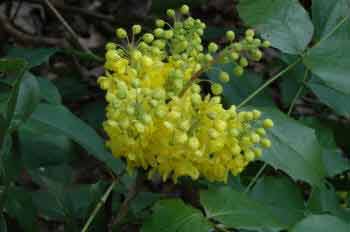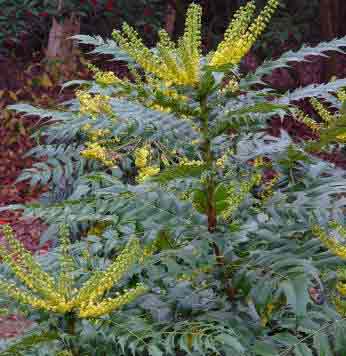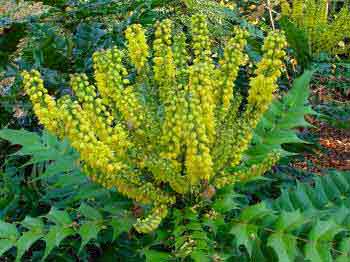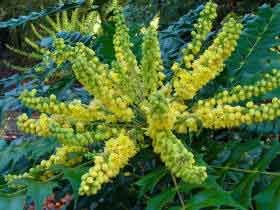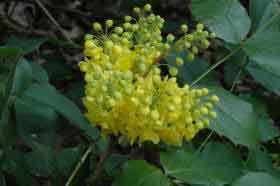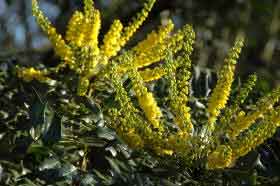Most gardeners either love or hate Mahonias. I most certainly fall into the former category for growing and photographing this range of plants has always given me great pleasure – especially on cold November days!
Mahonias are in the family Berberidaceae and as you might surmise from that, are related not too distantly to Berberis. Some of the tell-tale similarities include the make-up of the individual small flowers and in particular, the fact that just under their bark there is a bright yellow cambium layer or heartwood even.
Mahonia shrubs basically fall into one of two groups – conveniently tall or short! The taller varieties are typified by Mahonia x media ‘Charity’ types and the shorter, more compact group by the Mahonia aquifolium groups.
Image of Mahonia x media 'Lionel Fortescue' © David Hughes
All the Mahonias we discuss here are flowering evergreen shrubs with yellow flowers – normally scented – which appear either in the winter or spring months. The flowers of all Mahonia plants are followed by dark purple or black berries (fruits) which are soon dispatched by hungry birds. Whether or not they are edible is a matter of taste – and uncertainty!
If they taste anything like the related Berberis berries that I tried as a youngster they are best avoided, though there are recipes available for various jams. Some are listed as being poisonous to the effect of vomiting, lowering blood pressure etc if eaten in large quantities. I would suggest that they could certainly cause stomach upset if eaten raw in quantity. Best avoided!
The evergreen foliage is a gardener’s plus – sometimes striking, but always welcome. The taller types of Mahonia have long striking pinnate leaves atop the upright stems, whilst the shorter group – whilst attractive foliage and flowers have shorter individual pinnate leaves.
